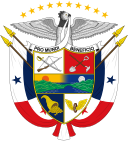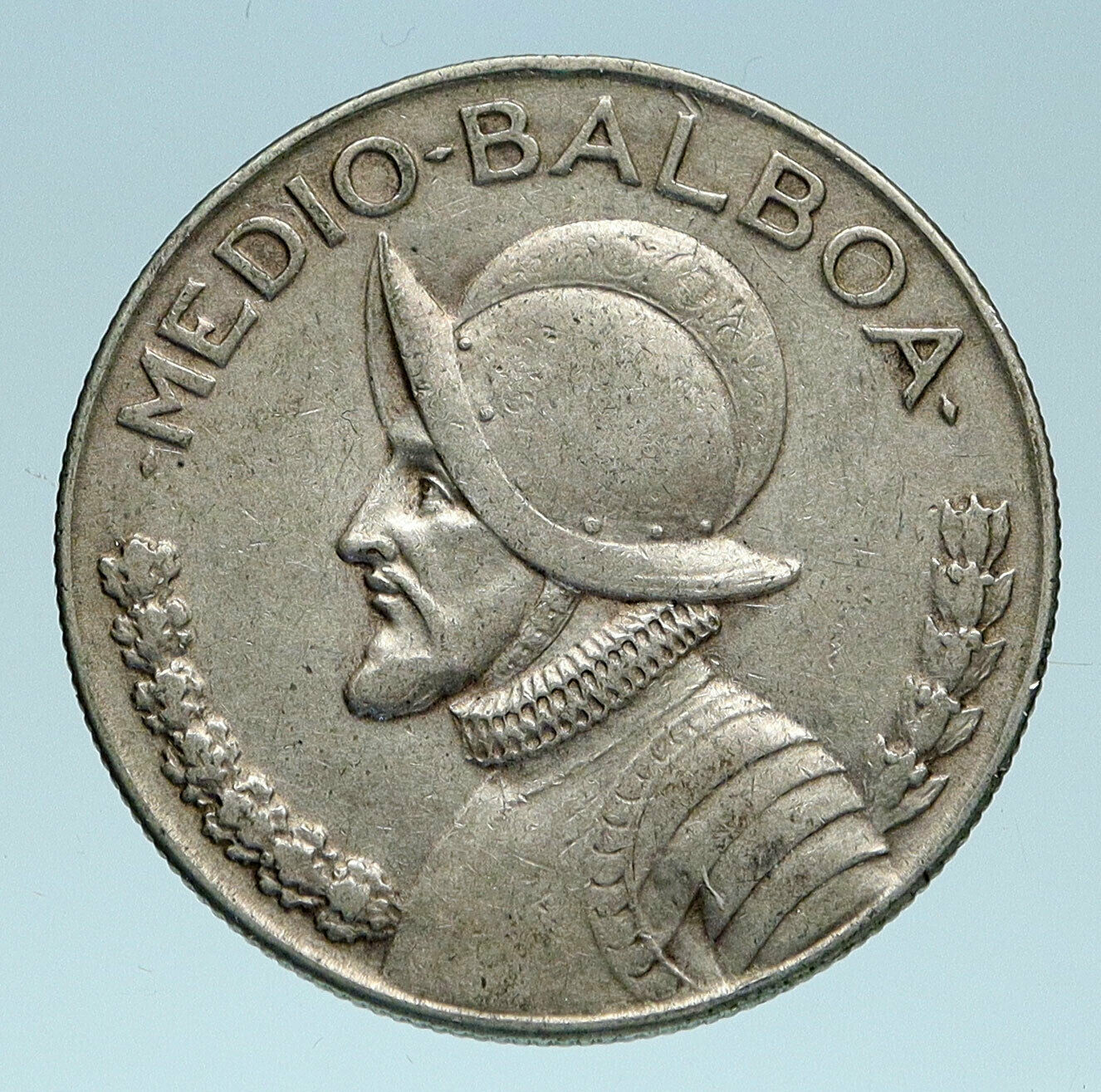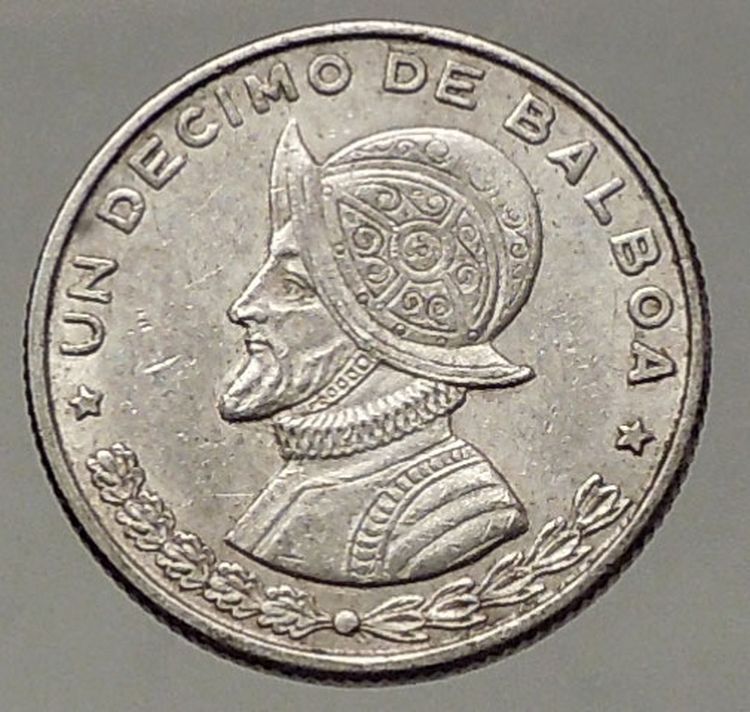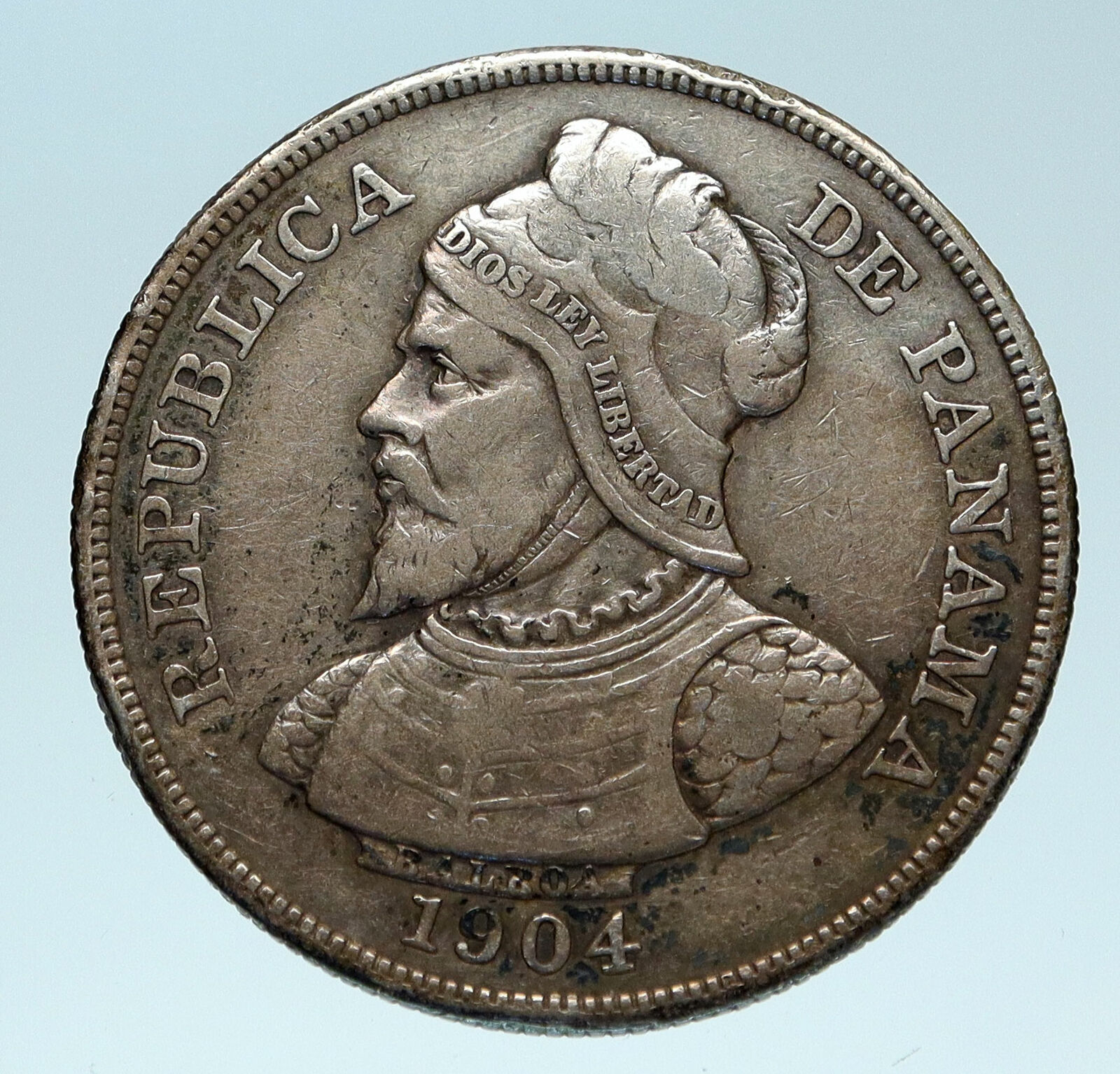|
Panama – Belisario Porras
1978 Proof Silver 5 Balboa 39mm (34.52 grams) 0.925 Silver (1.0444 oz. ASW)
Reference: 52a (1978)
BELISARIO PORRAS, Facing portrait of Belisario Porras.
REPUBLICA DE PANAMA 75º ANIVERSARIO ********* PRO MUNDI BENEFICIO LEY 0.925 FM 5 BALBOAS, National coat-of-arms.
You are bidding on the exact item pictured, provided with a Certificate of Authenticity and Lifetime Guarantee of Authenticity.
 Belisario Porras Barahona (28 November 1856, Las Tablas – 28 August 1942, Panama City) was a Panamanian journalist and politician. He served three terms as President of Panama between 1912 and 1924. Belisario Porras Barahona (28 November 1856, Las Tablas – 28 August 1942, Panama City) was a Panamanian journalist and politician. He served three terms as President of Panama between 1912 and 1924.
Porras was born on the thirty-fifth anniversary of Panama’s declaration of independence from Spain. Raised by his grandmother, his early education was paid for by his father in Bogotá, the capital of Colombia, which Panama was a province of at the time. He joined his father when he went to secondary school, went on to study law at the National University in 1874, and won a scholarship from the Colombian government to study in Belgium from where he later returned to the Panamanian
Working as a reporter, he aligned himself with the local Colombian Liberal Party, and was soon the target of persecution by the reigning Conservative government in Bogotá. Exiled to Nicaragua and El Salvador, he took jobs as a professor and a reporter.
As the Thousand Days War began in Colombia, the Liberals in Panama sent for Porras to lead the invasion of the Isthmus in 1900. Working with General Victoriano Lorenzo and others, he began his struggle from Costa Rica in the West. He organized a volunteer army and reached the capital where he was defeated in the Battle of Calidonia Bridge. Porras returned to exile until 1904, after his homeland had acquired its independence, and became a diplomat until becoming president in 1912. The Panama Canal was finished during his first term in office.
He was elected as the first presidential designate by the National Assembly in September 1918.
Belisario Porras Barahoma was born to Demetrio Porras Cavero and Juana Gumersinda Barahona. Belisario married twice. First, in 1881 he married Eva Paniza Arosemena and they had 5 children: Belisario Roberto, Demetrio, Camilo, María Teresa, Leticia Antonia. In 1906 he married Alicia Castro and had 4 children: Rodrigo, Hernán, Alicia y Álvaro. He also had children outside of both marriages: Demetrio Augusto, Silvia, Julieta y Emilia.
 Panama, officially the Republic of Panama, is the southernmost country of Central America and the whole of North America. Panama, officially the Republic of Panama, is the southernmost country of Central America and the whole of North America.
Situated on the isthmus connecting North and South America, it is bordered by Costa Rica to the west, Colombia to the southeast, the Caribbean to the north and the Pacific Ocean to the south. The capital and largest city is Panama City, whose metro area is home to nearly half of the country’s 3.6 million people.
 Panama was inhabited by several indigenous tribes prior to settlement by the Spanish in the 16th century. It broke with Spain in 1821 and joined a union of Nueva Granada, Ecuador, and Venezuela named the Republic of Gran Colombia. When Gran Colombia dissolved in 1831, Panama and Nueva Granada remained joined, eventually becoming the Republic of Colombia. With the backing of the United States, Panama seceded from Colombia in 1903, allowing the Panama Canal to be built by the U.S. Army Corps of Engineers between 1904 and 1914. In 1977, an agreement was signed for the total transfer of the Canal from the United States to Panama by the end of the 20th century, which culminated on 31 December 1999. Panama was inhabited by several indigenous tribes prior to settlement by the Spanish in the 16th century. It broke with Spain in 1821 and joined a union of Nueva Granada, Ecuador, and Venezuela named the Republic of Gran Colombia. When Gran Colombia dissolved in 1831, Panama and Nueva Granada remained joined, eventually becoming the Republic of Colombia. With the backing of the United States, Panama seceded from Colombia in 1903, allowing the Panama Canal to be built by the U.S. Army Corps of Engineers between 1904 and 1914. In 1977, an agreement was signed for the total transfer of the Canal from the United States to Panama by the end of the 20th century, which culminated on 31 December 1999.
.svg/375px-Panama_(orthographic_projection).svg.png) Revenue from canal tolls continues to represent a significant portion of Panama’s GDP, although commerce, banking, and tourism are major and growing sectors. Panama has the second largest economy in Central America and it is also the fastest growing economy and the largest per capita consumer in Central America. In 2013, Panama ranked 5th among Latin American countries in terms of the Human Development Index, and 59th in the world. Since 2010, Panama remains the second most competitive economy in Latin America, according to the World Economic Forum’s Global Competitiveness Index. Covering around 40 percent of its land area, Panama’s jungles are home to an abundance of tropical plants, animals and birds – some of them to be found nowhere else in the world. Revenue from canal tolls continues to represent a significant portion of Panama’s GDP, although commerce, banking, and tourism are major and growing sectors. Panama has the second largest economy in Central America and it is also the fastest growing economy and the largest per capita consumer in Central America. In 2013, Panama ranked 5th among Latin American countries in terms of the Human Development Index, and 59th in the world. Since 2010, Panama remains the second most competitive economy in Latin America, according to the World Economic Forum’s Global Competitiveness Index. Covering around 40 percent of its land area, Panama’s jungles are home to an abundance of tropical plants, animals and birds – some of them to be found nowhere else in the world.
|





 Belisario Porras Barahona (28 November 1856, Las Tablas – 28 August 1942, Panama City) was a Panamanian journalist and politician. He served three terms as President of Panama between 1912 and 1924.
Belisario Porras Barahona (28 November 1856, Las Tablas – 28 August 1942, Panama City) was a Panamanian journalist and politician. He served three terms as President of Panama between 1912 and 1924.  Panama, officially the Republic of Panama, is the southernmost country of Central America and the whole of North America.
Panama, officially the Republic of Panama, is the southernmost country of Central America and the whole of North America. Panama was inhabited by several indigenous tribes prior to settlement by the Spanish in the 16th century. It broke with Spain in 1821 and joined a union of Nueva Granada, Ecuador, and Venezuela named the Republic of Gran Colombia. When Gran Colombia dissolved in 1831, Panama and Nueva Granada remained joined, eventually becoming the Republic of Colombia. With the backing of the United States, Panama seceded from Colombia in 1903, allowing the Panama Canal to be built by the U.S. Army Corps of Engineers between 1904 and 1914. In 1977, an agreement was signed for the total transfer of the Canal from the United States to Panama by the end of the 20th century, which culminated on 31 December 1999.
Panama was inhabited by several indigenous tribes prior to settlement by the Spanish in the 16th century. It broke with Spain in 1821 and joined a union of Nueva Granada, Ecuador, and Venezuela named the Republic of Gran Colombia. When Gran Colombia dissolved in 1831, Panama and Nueva Granada remained joined, eventually becoming the Republic of Colombia. With the backing of the United States, Panama seceded from Colombia in 1903, allowing the Panama Canal to be built by the U.S. Army Corps of Engineers between 1904 and 1914. In 1977, an agreement was signed for the total transfer of the Canal from the United States to Panama by the end of the 20th century, which culminated on 31 December 1999..svg/375px-Panama_(orthographic_projection).svg.png) Revenue from canal tolls continues to represent a significant portion of Panama’s GDP, although commerce, banking, and tourism are major and growing sectors. Panama has the second largest economy in Central America and it is also the fastest growing economy and the largest per capita consumer in Central America. In 2013, Panama ranked 5th among Latin American countries in terms of the Human Development Index, and 59th in the world. Since 2010, Panama remains the second most competitive economy in Latin America, according to the World Economic Forum’s Global Competitiveness Index. Covering around 40 percent of its land area, Panama’s jungles are home to an abundance of tropical plants, animals and birds – some of them to be found nowhere else in the world.
Revenue from canal tolls continues to represent a significant portion of Panama’s GDP, although commerce, banking, and tourism are major and growing sectors. Panama has the second largest economy in Central America and it is also the fastest growing economy and the largest per capita consumer in Central America. In 2013, Panama ranked 5th among Latin American countries in terms of the Human Development Index, and 59th in the world. Since 2010, Panama remains the second most competitive economy in Latin America, according to the World Economic Forum’s Global Competitiveness Index. Covering around 40 percent of its land area, Panama’s jungles are home to an abundance of tropical plants, animals and birds – some of them to be found nowhere else in the world.




